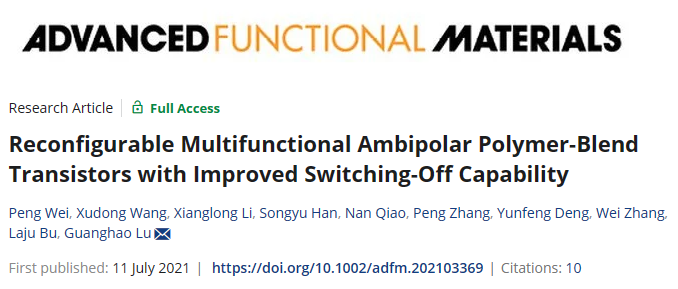
Ambipolar field-effect transistors allowing both holes and electrons transport can work in different states, which are attractive for simplifying the manufacture of circuits and endowing the circuits with reconfigurable multi-functionalities. However, conventional ambipolar transistors intrinsically suffer from poor switching-off capability because the gate electrode is not able to simultaneously deplete holes and electrons across the entire transport channel, which hurdles the practical applications. This study shows that the switching-off capability of polymer ambipolar transistor is significantly improved by up to three orders by introducing non-uniformly distributed compensation potentials along the channel to synchronically tune the charge transport at different channel locations. The non-uniform compensation potential is experimentally generated by the non-uniformly distributed electret charges, which are pre-injected into the insulators from source and drain electrodes. By this method, both n-type and p-type operations with high mobility (2.2 and 0.8 cm2s−1V−1 respectively) and high on/off ratio (105) are obtained in the same device, and the different states are reversibly switchable. Moreover, this method endows the device with diverse device characteristics and reconfigurable multi-functionalities, which promotes the application of ambipolar transistors in complementary metal-oxide semiconductors-like circuits and some emerging electronics, including reconfigurable devices, multi-level memories, and artificial synapses.
Link:https://onlinelibrary.wiley.com/doi/10.1002/adfm.202103369?af=R&__cf_chl_jschl_tk__=zqvhX3HXkWvuZPD1RXDcpPkKzbswDjRLYJB0xhS08wE-1639468912-0-gaNycGzNCD0